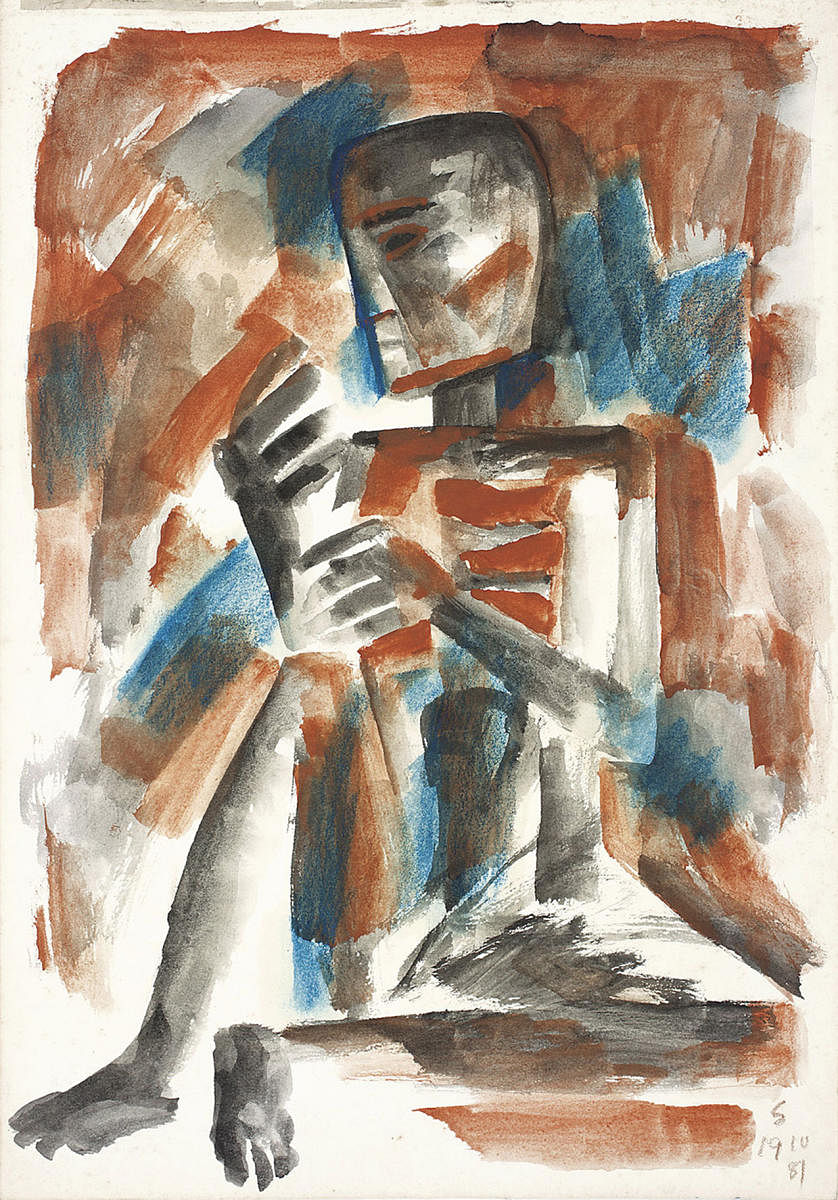
By all accounts, Somnath Hore (1921-2006), was among the most significant and influential artists of the post-Independence era. Working in a variety of mediums, including painting, drawing, graphics, posters, and in later years, sculpture, the nimble-fingered Bengali artist created a plethora of penetrative and poignant images that highlighted the socio-political milieu of his time.
Inspired by humanist traditions and armed with leftist ideology, Hore responded to incidents and upheavals that unfolded before him with sensitive, expressive, but controlled imagery. His work featured the many pains and pangs of the common man, and the conflicts and suffering he was subjected to.
“On a summer morning, the world glows with sunlight, the flowers load the trees, the breeze wafts around a heady kind of perfume — but in Somnath’s vision, it is the spectacle of man’s suffering that steals the show,” wrote scholar and artist (late) K G Subramanyan. “In everything he sees, he reads its gesture of tragedy… So in a crack in the earth, he sees a dire menace. In fissures in the wall, he recalls a gaping wound. Even his sensuous fantasies are sewn up in a skin of suffering.”
Sketching the famine
Hore was a young man in his twenties when he witnessed and pictorially documented the Bengal famine of 1943, the Tebhaga peasant movement in North Bengal in 1946 and the Direct Action Day (also known as ‘16 August 1946 Calcutta Killings’). Hore was one among a small group of artists who travelled around the Bengal countryside sketching the aftermath and reverberations of the manmade calamity. The horror and deprivation of the famine, which killed nearly three million people, left a long lasting impression on the budding artist. In the winter of 1946, while documenting the Tebhaga movement in North Bengal, he produced a series of evocative sketches, which captured the spirit of peasant consciousness, even as national politics was ravaged by communalism.
These events laid the foundation for Hore’s future works and thought. “Quite unbeknownst to me, the wounds of the 1950 famine, the inhumanity of war, the horrors of the communal riots of 1946 — all these were inscribing themselves into my techniques of drawing,” reminisced the artist in his book ‘My Concept of Art’. “Later, all those innumerable cuts and marks would bring intimations of only one subject matter — the helpless around us, the rejected, the hungry. The chalk that had crossed my fingers to reach my heart when I sketched the victims of famine left a wound that would not heal.”
Hore displayed the same passion and intensity throughout his life while responding to manmade catastrophic events, which he directly came to witness or came to know from news reports. His images on the Vietnam War, the Congo conflict (1960-67), the Bangladesh Liberation Movement (1971), among others, were deeply moving. The hanging of South African poet and political activist, Benjamin Moloise (1985) and the brutal killing of playwright-activist Safdar Hashmi in Delhi in January 1989, reverberated in his work and showed how informed and involved he was in happenings that were beyond his immediate surroundings.
The folded body
While projecting a vision of human pain and suffering, Hore portrayed his protagonists with a characteristic poise and understanding. Subramanyan maintains that despite the tragic content, Hore’s work do not repel our eye; they draw us in. “His artistry gives each item a kind of appeal; the sharpness of the bone, the tightness of the skin, the deadness of the eyes, the muteness of the mouths, the limp inertia of the folded body. They entice the eye in and lacerate it… They are insidious; they slip slowly in. Then they disturb us and shade into the didactic. We start thinking, what is this world that we see daily? And run our hands over our faces. And find that the bone lies below the flesh.”
Critics have also marvelled at how Hore brought out an exceptional meticulousness in form, content and technique in whichever medium he chose to work with. He was undoubtedly a master of printmaking; students and peers who saw him work on various techniques vouch for his incredible skill as well as child-like curiosity in absorbing new methods, ideas and materials.
“His printing technique is superlative for he is a painstaking man and believes in precision,” wrote art critic Richard Bartholomew way back in 1967.
Belief in austerity
Hore had a distinguished career as a teacher working in various capacities at the Indian College of Art and Draughtsmanship in Calcutta, the Delhi College of Art, M S University in Baroda and Kala Bhavana, Visva Bharati, Santiniketan.
His students and associates remember him as a very simple man in appearance and actual living. He never sought fame or fortune and was more than content with a frugal existence in a modest home tucked behind the foliage in Santiniketan.
“Somnath da was the most non-pretentious artist it has been my good fortune to meet,” recalls well-known sculptor K S Radhakrishnan. “His simplicity spoke through his personality, his clothes, lifestyle, and conversations. He lived in an old building next to Kala Bhavana and after retirement, built a mud house near a pond. He was only expressive in his art, otherwise he did not like talking about himself and shied away from the media. He once got on a train to visit Delhi, but got off after a few stations and returned to Santiniketan! He refused the Padma Shri, not wanting to receive an honour from the state (though he was given a Padma Bhushan posthumously in 2007).”